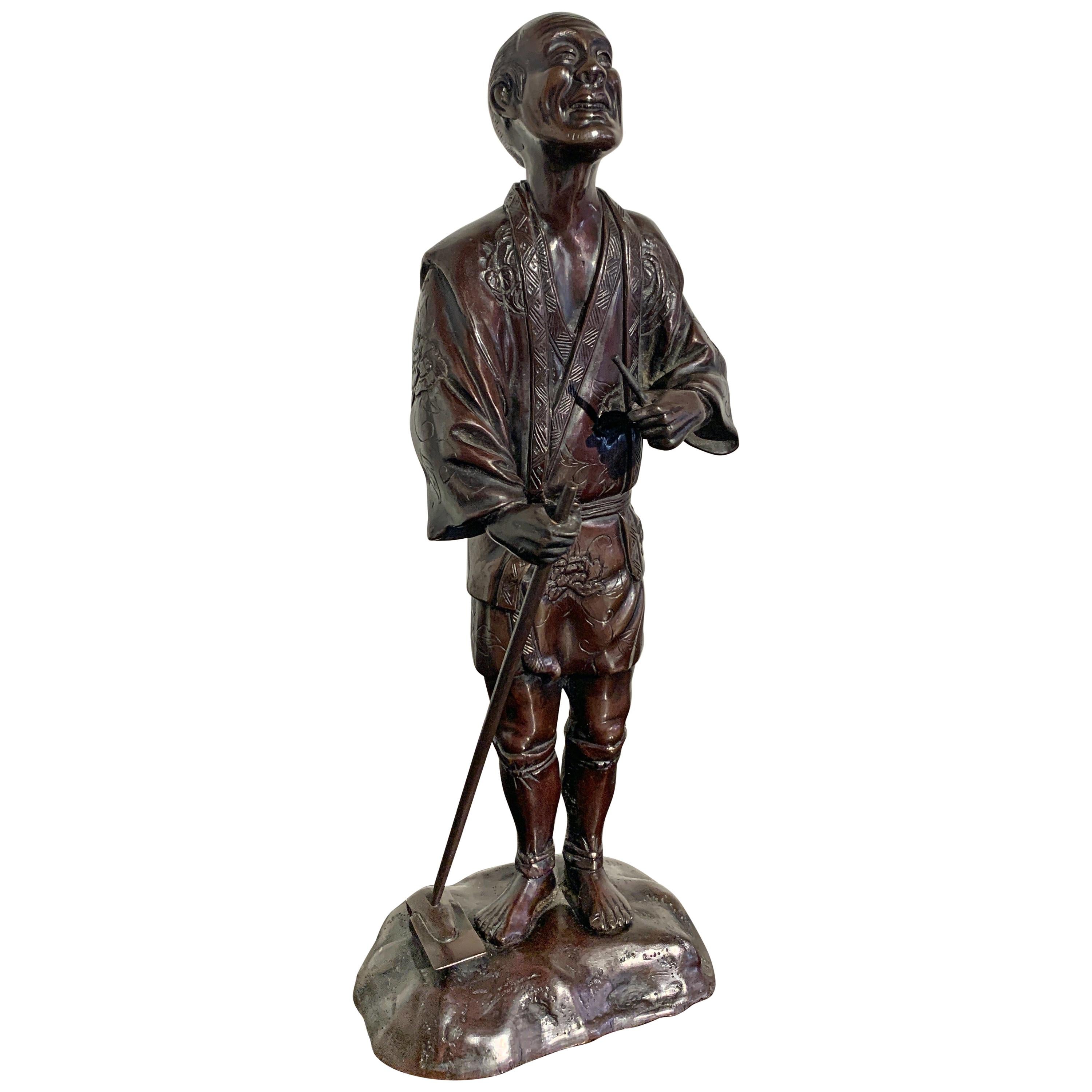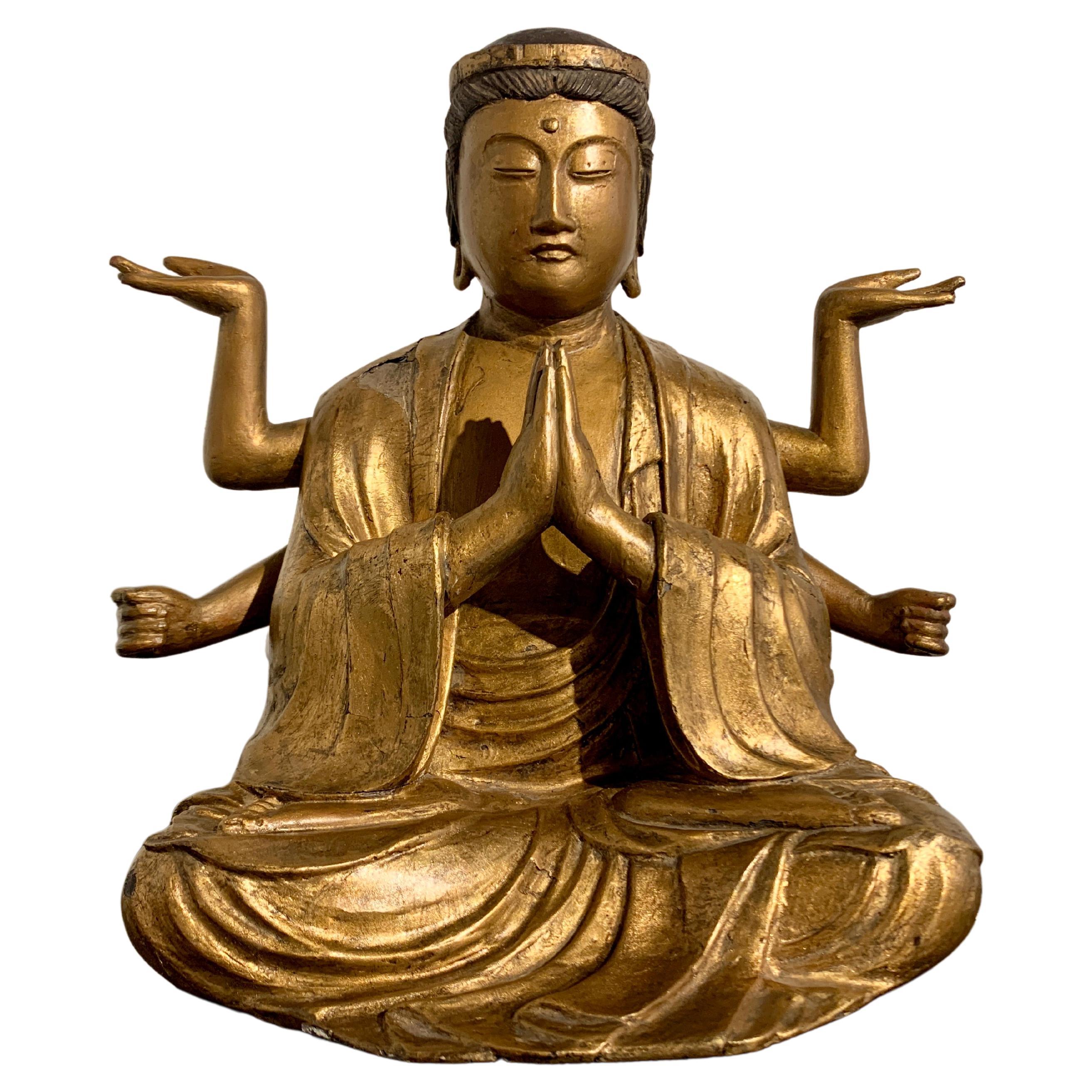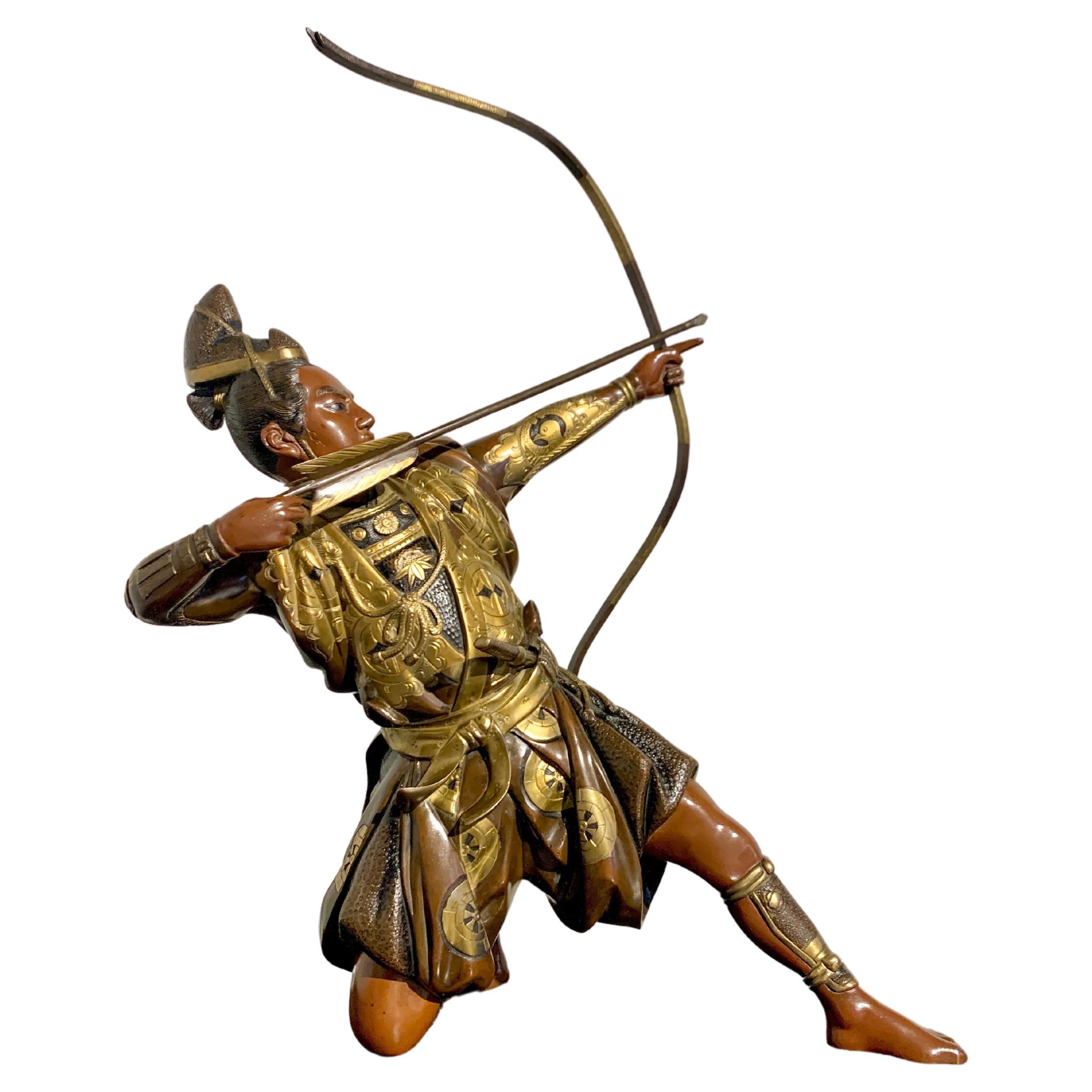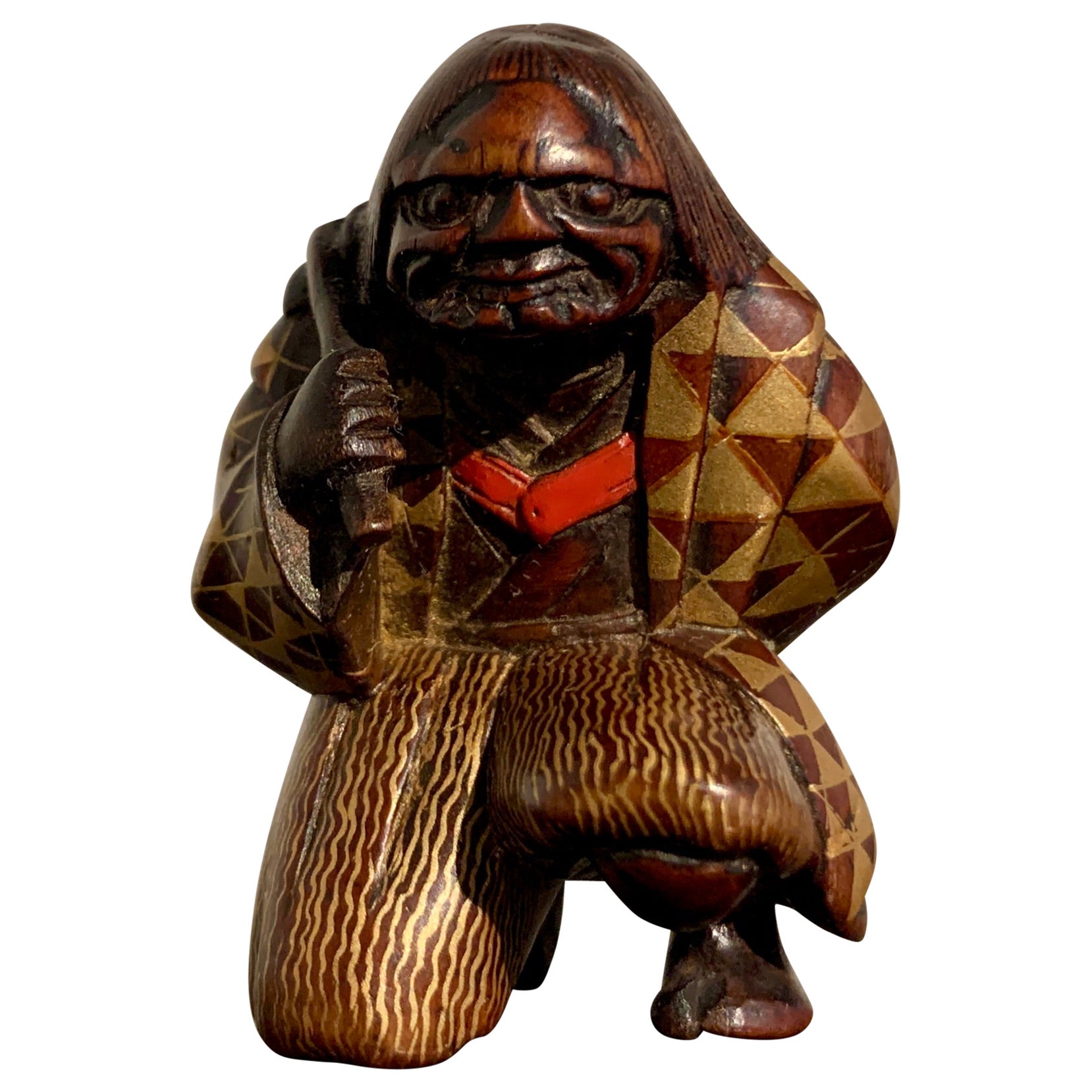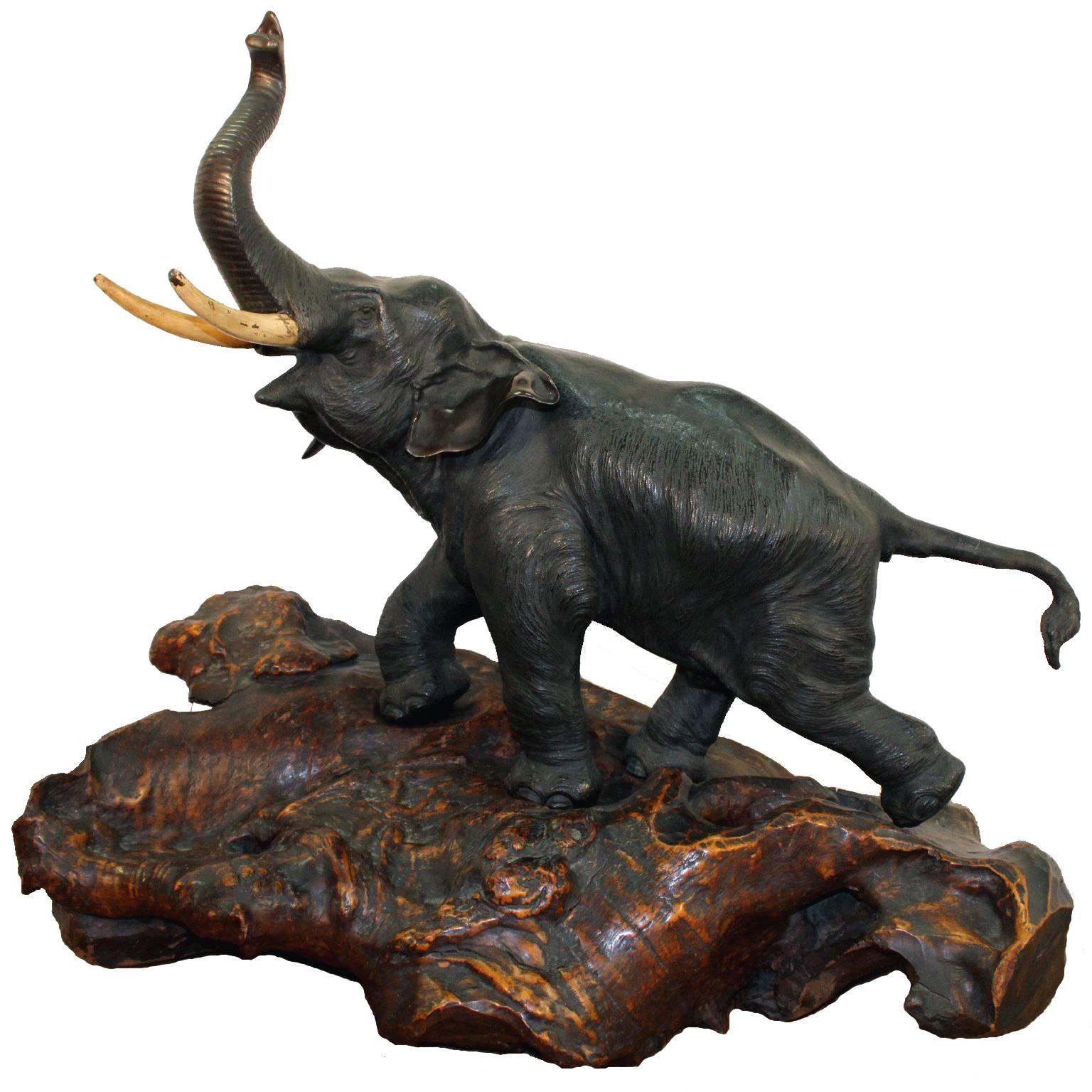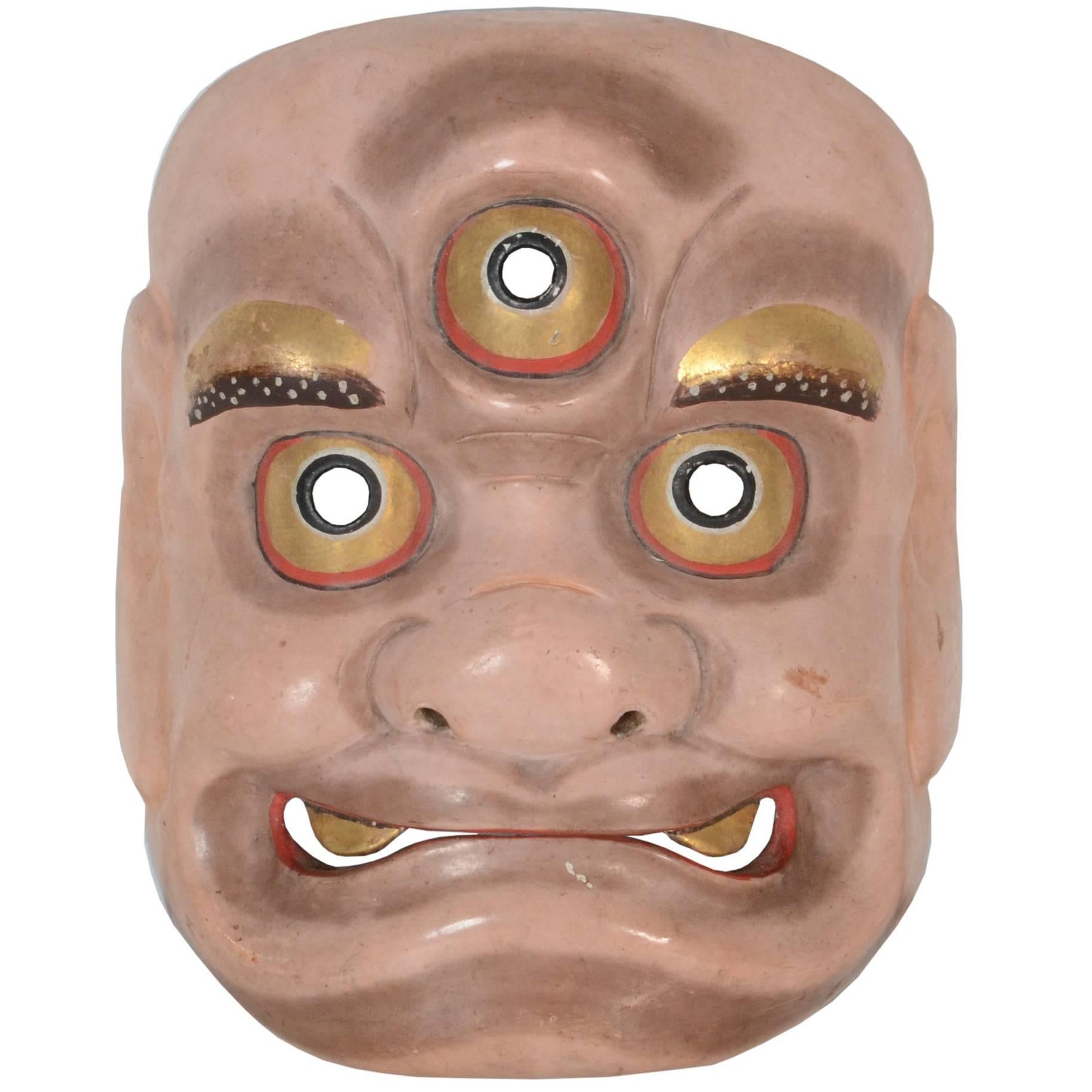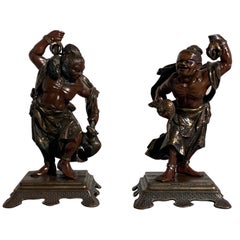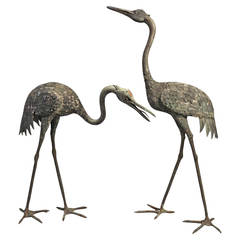
Pair of Meiji Period Japanese Cranes
View Similar Items
1 of 10
Pair of Meiji Period Japanese Cranes
About the Item
- Dimensions:Height: 65 in (165.1 cm)Width: 32 in (81.28 cm)Depth: 19 in (48.26 cm)
- Sold As:Set of 2
- Style:Meiji (Of the Period)
- Materials and Techniques:Bronze,Cast
- Place of Origin:
- Period:
- Date of Manufacture:Circa 1890
- Condition:Minor losses.
- Seller Location:Sheffield, MA
- Reference Number:Seller: Item #75551stDibs: LU83412966732
You May Also Like
- Pair of Japanese Gilt Bronze Komainu by Ishikawa Komei, Meiji PeriodLocated in Austin, TXA striking pair of Japanese gilt bronze komainu by the renowned Japanese sculptor, Ishikawa Komei (1852-1913), Meiji period, Japan. The pair well cast, and robustly modeled. They ar...Category
Antique Late 19th Century Japanese Meiji Sculptures and Carvings
MaterialsBronze
- Japanese Tokyo School Bronze Okimono of a Farmer, Meiji PeriodLocated in Austin, TXA very fine and detailed Tokyo School cast bronze okimono (decorative sculpture) of a smiling farmer, Meiji period, late 19th century, Japan. The e...Category
Antique Late 19th Century Japanese Meiji Sculptures and Carvings
MaterialsBronze
- Pair of Japanese Cast Bronze Figures of Niō, Meiji Period, Late 19th CenturyLocated in Austin, TXA well cast pair of Japanese mixed metal okimono figures of Buddhist guardians, known as Nio or Dharmapala, protectors of Buddhist faith, Meiji Period, Japan. The smiling bronze g...Category
Antique Late 19th Century Japanese Meiji Sculptures and Carvings
MaterialsBronze
- Japanese Gilt Wood Fukukenjaku Kannon, Meiji Period or Earlier, JapanLocated in Austin, TXAn attractive and esoteric Japanese carved and gilt wood figure of Fukukenjaku Kannon, Amoghapasa, Meiji period or earlier, Japan. Fukukenjaku Kannon is portrayed in an usual six...Category
Antique Early 1900s Japanese Meiji Sculptures and Carvings
MaterialsCypress
- Japanese Miyao Style Gilt Bronze Samurai Archer, Meiji Period, JapanBy Eisuke Miyao 1Located in Austin, TXA spectacular Japanese cast, carved, and parcel gilt bronze sculpture, okimono, of a kneeling samurai archer, signed Kiyotsugu (died 1894), Meiji ...Category
Antique Late 19th Century Japanese Meiji Sculptures and Carvings
MaterialsBronze
- Japan 1890 Meiji Period Signed Assembling of Okimono with a Group of SkeletonsLocated in Miami, FLA signed Okimono from the Japanese Meiji period (1868-1912). Very rare, unusual and large sculptural assembling of a dysplaying piece of okimono. Created in Japan during the imperial period of the Meiji (1868-1912). This extraordinary piece okimono sculpture depict a group of four intricately and realistically rendered carousing males skeletons representations (Gaikotsu) standing in several position. One skeleton is crouched down playing with mouses in the floor. The second is seated resting in the other's back, peacefully smoking opium. The others two are fully standing in interacting position. The entire composition is arranged freely displayed on the wood base including a woven basket, apparently with food and four playfull mouses. There are an extra five mouses in different positions, freely playing around, all of them with the eyes accented with carved black ebony. The composition is displayed on a four-legged free form carved wood platform with an inlaid red plaque engraved with the artist's signature. The level of detail and the quality of the carving is truly exceptional. Has an exact measurements of 216.15 mm by 139.7 mm by 359.41 mm (8.51 x 5.5 x 14.15 Inches). After an extensive collection of data, comparables and references to this piece, we have only been able to find only three okimono sculptures like this, with similar themes and the same quality of work. References Note: A similar carving of four skeletons playing an animated game of dominos, signed Shutaro in an inlaid rectangular red plaque, was sold in London by Christie’s South Kensington in October 14 2014, Lot 120 Sale 5546. References Note: A similar carving with four skeletons in an otherwise typical victorian scene of a photographer and three sitters signed Shutaro in an inlaid rectangular red plaque, was sold in Edinburgh at Lyon & Turnbull in November 7, 2018. References Note: A similar carving with five skeletons seated, playing cards and drinking, was sold in London by John Nicholson Fine Art on September 26, 2018. Meiji period, is an era of Japanese history that extended from October 23, 1868 to July 30, 1912.The Meiji era was the first half of the Empire of Japan, when the Japanese people moved from being an isolated feudal society at risk of colonization by Western powers to the new paradigm of a modern, industrialized nation state and emergent great power, influenced by Western scientific, technological, philosophical, political, legal, and aesthetic ideas. As a result of such wholesale adoption of radically different ideas, the changes to Japan were profound, and affected its social structure, internal politics, economy, military, and foreign relations. The period corresponded to the reign of Emperor Meiji. It was preceded by the Keio era and was succeeded by the Taisho era, upon the accession of Emperor Taisho. Okimono, is a Japanese term meaning for display an ornament; art object; or decorative object, usually displayed in a tokonoma or butsudan "Buddhist altar". It is an ornament or figure, especially one placed in a guest room. An okimono may be a small Japanese carving...Category
Antique 1890s Japanese Meiji Sculptures and Carvings
MaterialsWood
Recently Viewed
View AllMore Ways To Browse
Crown Crane
Crowned Crane
Red Crown Cranes
Red Crowned Crane
Wood Encased
Burmese Wood
Burma Wood
Stone Garden Japanese
19th Century Japanese Carved Furniture
Japanese Wood Carving
North American Japanese Garden
20 Century Chinese China
Asian Wooden Sculptures
Antique Japanese Carving
Japanese Black Stone
Temple Stone
Buddha Bronze
Bronze Buddha

